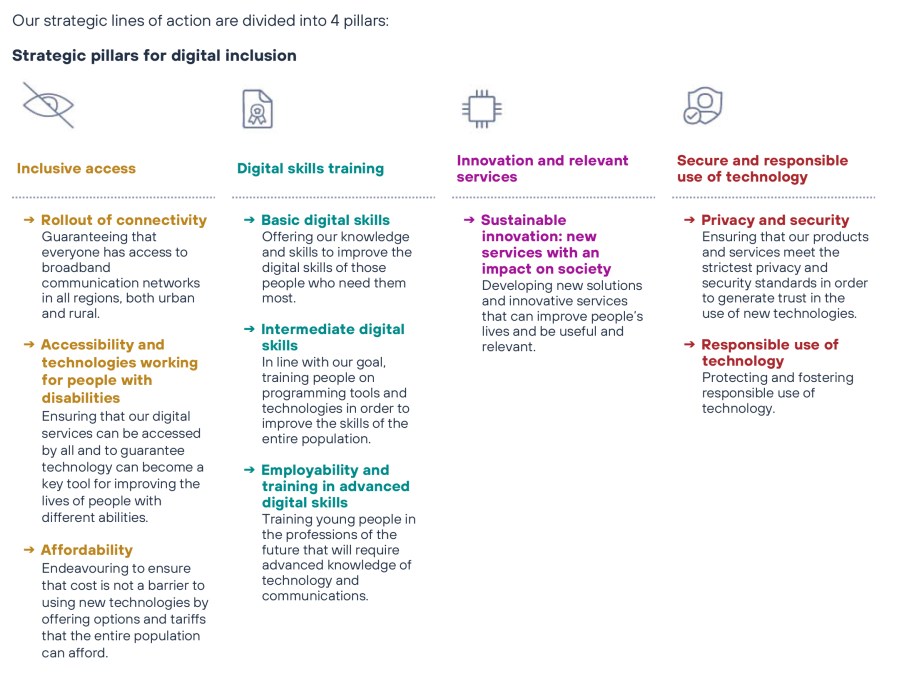The opportunities for economic growth and social welfare enabled by connectivity and new technologies, make digital transformation a priority objective in all countries. However, achieving full digital inclusion without leaving anyone behind is one of the biggest challenges in the process of digitisation.
Advancing digital inclusion is a joint responsibility. Advancing digital inclusion is a joint responsibility, and for Telefónica, it is a key priority. This commitment leads us to implement a variety of initiatives in all the countries in which we operate, aimed at ensuring that everyone has access to the benefits of digitalisation.

Telefónica has developed a Digital Inclusion Compass to strengthen public-private cooperation. The compass includes an analysis of digital divides in Europe and Latin America, along with strategies to overcome them.
Three position papers will be published in the coming weeks.
Part I: from the coverage gap to the usage gap
The first part of the positioning “From the coverage gap to the usage gap” proposes a shift in the approach to bridging the digital divide. Traditionally, the coverage gap has been seen as the main barrier to achieving full digital inclusion. However, despite the fact that the percentage of people without Internet access has decreased significantly globally in recent years, there are still people who do not make use of connectivity. Although mobile broadband networks cover 95% of the world, 40% of the population covered by these networks do not use them. This indicates that there are additional barriers to digital inclusion that have not received sufficient attention. Therefore, it is essential to investigate the factors that contribute to the usage gap.
Part II: Innovation, digitisation and prosperity in the digital age
The second positioning will focus on innovation, digitisation and prosperity in the digital age. This paper is based on the assumption that economic growth must be inclusive and sustainable in the digital age. The challenge of the 21st century is to take full advantage of the opportunities and prosperity offered by the digital economy, but the breakneck speed of transformation brought about by unstoppable technological innovation widens inequality and competitiveness gaps. Thus, the key to balanced and fair growth lies in extending digital benefits across the entire productive structure. Prosperity requires a comprehensive undestanding of the digital economy, where innovation and digital entrepreneurship are at the heart of the transformation of governments, companies and production models.
Part III: Building digital trust
Finally, the third paper focuses on (re)building digital trust as an essential element to bridge the digital divide and promote inclusion. The latest data indicates that global trust in the technology sector is below 68%, which hinders the adoption of digital services and the use of new technologies by individuals, businesses and governments. Among the main risks that generate distrust are scams, cybersecurity breaches, loss of control of data, misinformation or biases in artificial intelligence. A responsible governance model is essential to protect fundamental rights, privacy and security. This would promote the participation of vulnerable groups and smaller companies in the digital ecosystem.
With these publications we will propose a Compass for digital inclusion. A guide to advance the implementation of public-private policies and initiatives to bridge the digital divide. It is essential to move towards full digital inclusion without leaving anyone behind.











